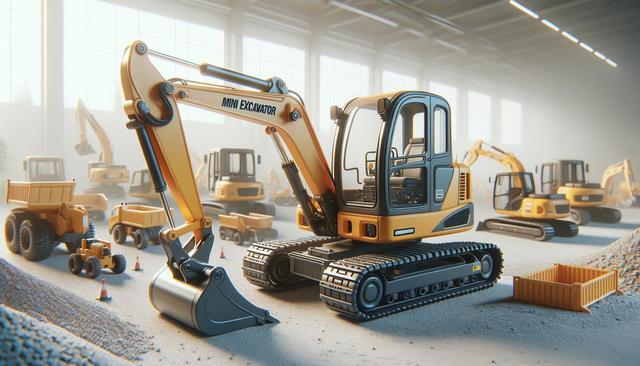What Are Mini Excavators?
Mini excavators are compact, powerful construction machines designed for tasks that require digging, trenching, and demolition in tight spaces. Unlike their larger counterparts, mini excavators are smaller in size, typically weighing between 1 to 10 tons. This makes them ideal for urban job sites, residential construction, landscaping, and utility projects. They offer a balance between performance and maneuverability, which is why they are increasingly favored by contractors, landscapers, and even homeowners taking on large DIY projects.
These machines come equipped with a boom, dipper, and bucket, all attached to a rotating cab that allows for 360-degree movement. Many models also feature attachments like augers, breakers, and thumbs, enhancing their versatility. Mini excavators are usually powered by diesel engines and use hydraulic systems to function, delivering sufficient force for most small to medium tasks without the bulk of a standard excavator.
Key Advantages of Using Mini Excavators
One of the primary benefits of mini excavators is their compact footprint, which allows them to operate in confined or limited-access areas. Their lightweight design also means they can be transported easily using standard trailers, reducing logistical challenges for job sites. Here are some notable advantages:
- Ease of transportation and storage
- Lower fuel consumption compared to larger machines
- Minimal ground damage due to lighter weight
- Adaptability with various attachments
Mini excavators are also simpler to operate, making them accessible to less experienced users. Their cabs are often designed with comfort in mind, including ergonomic controls and climate control options on more advanced models. This further contributes to productivity on the job site by reducing operator fatigue and increasing efficiency.
Common Applications in Construction and Beyond
Mini excavators are used in a broad range of industries due to their flexibility. In construction, they are commonly employed for tasks like site preparation, trenching for utilities, and small-scale demolition. Landscapers rely on mini excavators for digging tree holes, grading land, and installing hardscapes. In agriculture, they assist in tasks such as digging irrigation trenches and clearing brush.
Some of the most common applications include:
- Digging foundations and footings
- Installing underground utilities
- Breaking up concrete and asphalt
- Drainage system installation
- Pool and pond excavation
Because of their maneuverability and versatility, mini excavators are also increasingly used in municipal projects, such as repairing sidewalks, maintaining parks, and improving roadside infrastructure.
Choosing the Right Mini Excavator
When selecting a mini excavator, it’s important to consider the specific needs of your project. Factors such as operating weight, dig depth, and available attachments all play a role in determining the right machine. For example, a homeowner digging a backyard pond might prioritize a lightweight model with a shallow dig depth, while a contractor installing sewer lines will need a more robust machine with greater reach and hydraulic capacity.
Key considerations when choosing a mini excavator include:
- Engine power and hydraulic performance
- Attachment compatibility
- Width and height for tight access areas
- Cab features and operator comfort
- Maintenance requirements and support availability
Renting is also a popular option for those who need a mini excavator for short-term use. Many equipment rental services offer flexible terms and a variety of models, which can be a cost-effective solution for small businesses and individuals.
Maintenance and Long-Term Use
Proper maintenance is crucial for extending the life of mini excavators and ensuring they operate efficiently. Regular inspections should be part of the routine, focusing on the hydraulic system, track condition, fluid levels, and engine health. Keeping up with manufacturer-recommended service intervals helps prevent costly downtime and extends the machine’s usability.
Common maintenance tasks include:
- Checking and changing hydraulic and engine oils
- Cleaning air filters
- Inspecting and tightening track components
- Lubricating moving parts
- Monitoring attachment wear and tear
Training operators on proper usage and encouraging responsible handling also contribute to minimizing wear. Keeping the equipment stored in a clean, dry place when not in use further protects it from environmental damage. Investing in preventative maintenance not only enhances safety but also preserves the machine’s resale value, making it a smart move for long-term ownership.
Conclusion: A Practical Solution for Diverse Projects
Mini excavators offer a practical and efficient solution for a wide range of construction, landscaping, and utility projects. Their compact size, versatility, and ease of use make them a valuable asset for professionals and DIY enthusiasts alike. Whether you’re preparing a building site, installing drainage, or reshaping a garden, mini excavators provide the performance needed to get the job done while keeping operational costs lower than larger machinery. With proper selection and maintenance, they can serve reliably for years, making them an important consideration for any project involving earthmoving or excavation tasks.








